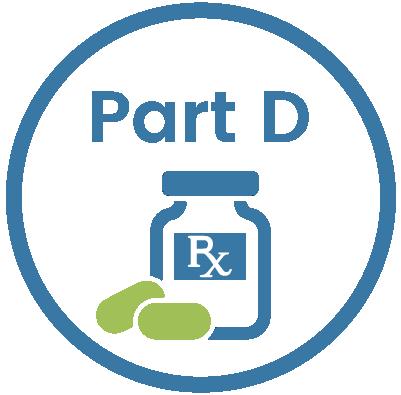Medicare Part D

Medicare Part D is a crucial component of the United States Medicare program, specifically designed to provide prescription drug coverage to Medicare beneficiaries. Since its inception, Part D has played a vital role in ensuring access to necessary medications for millions of older adults and people with disabilities. Here’s a comprehensive look at Medicare Part D, its benefits, workings, and impact.
Origins and Purpose
- Medicare Part D was introduced as part of the Medicare Modernization Act (MMA) of 2003. Before this, Medicare did not cover outpatient prescription drugs, leaving a significant gap in healthcare coverage for Medicare beneficiaries. Part D was established to address this gap by offering prescription drug plans (PDPs) managed by private insurance companies but approved and regulated by Medicare.
Medicare Part D Plan Availability and Options
- In 2024, there are 709 PDPs offered across 34 regions nationwide, excluding some areas. These plans vary in terms of coverage details, costs, and the list of covered drugs (formulary). Beneficiaries have the freedom to choose a plan that best suits their medication needs and budget.
Impact on Healthcare
- Studies have examined the impact of Medicare Part D on various aspects of healthcare. It has been associated with increased prescription drug use among beneficiaries, potentially leading to better disease management and health outcomes. The program’s focus on generic drug prescription, particularly in long-term care settings, has been a point of discussion in terms of cost-effectiveness and healthcare quality.
Cost and Premiums for Medicare Part D
- Premiums for Medicare Part D plans are projected to remain stable in 2024, thanks to program improvements under the Inflation Reduction Act. However, costs can vary based on the specific plan chosen. Beneficiaries should consider premiums, deductibles, and out-of-pocket costs when selecting a plan.
Enrollment and Penalties
- Enrollment in Medicare Part D is optional, but there are penalties for late enrollment, which typically apply for as long as the beneficiary has drug coverage. Enrollment can be done online, via paper forms, or by calling Medicare directly. It’s crucial to enroll during the initial eligibility period to avoid penalties.
Future Outlook
- Medicare Part D continues to evolve, with ongoing policy discussions focusing on cost containment, improving access to necessary medications, and adapting to the changing healthcare landscape.
In summary, Medicare Part D has been a significant addition to the Medicare program, offering much-needed prescription drug coverage to its beneficiaries. With various plans available, it’s essential for individuals to carefully assess their needs and choose an appropriate plan, keeping in mind the costs and coverage specifics.